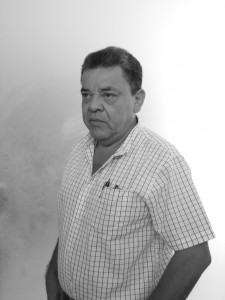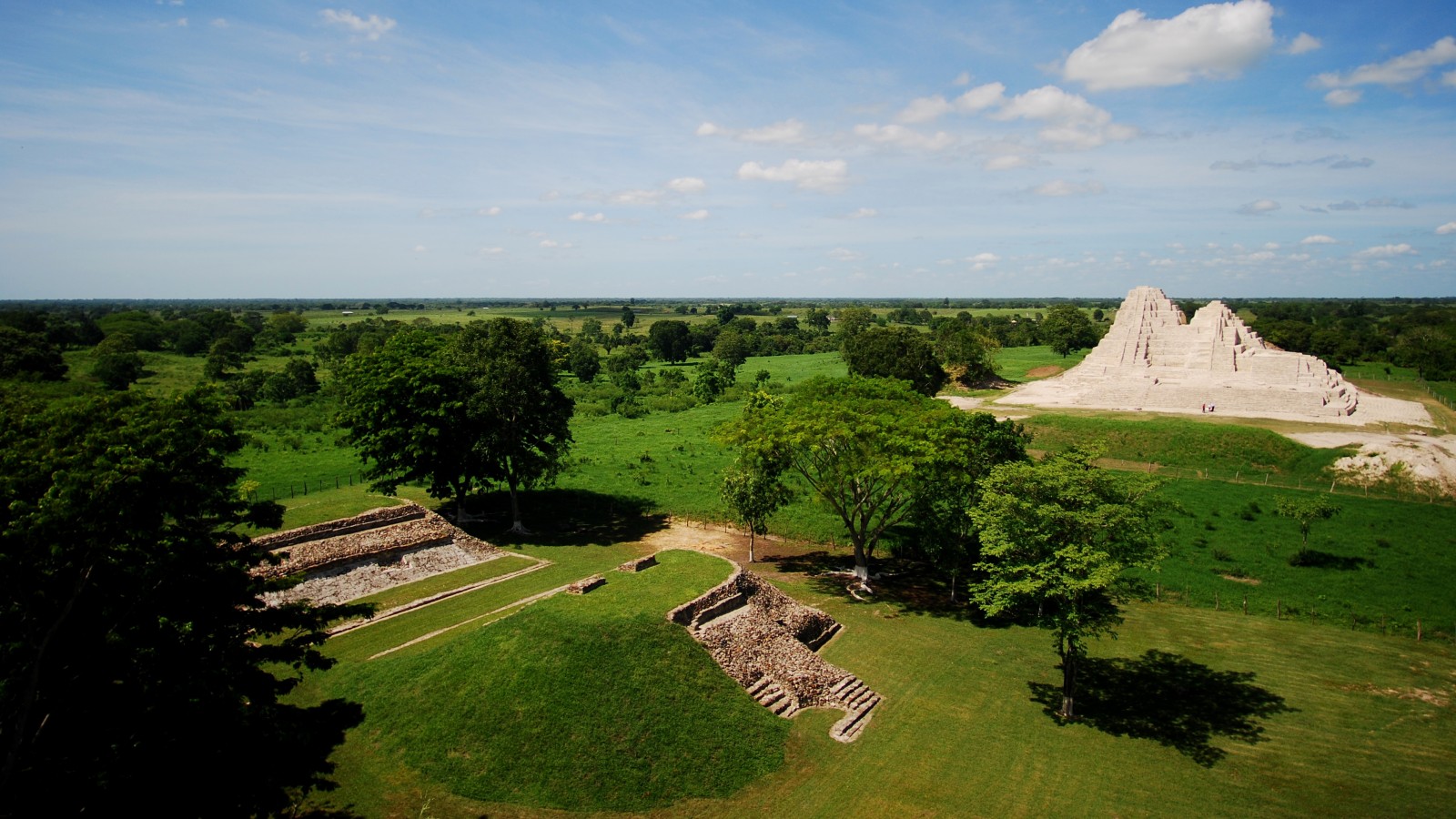In Moral Reforma, like in many contemporary Mayan cities, monumental sculptures formed an important part of the architectural landscape, displaying the human form as an ideal prototype with a strong symbolic character. Among the 44 fragments and complete sculptures recorded in Moral Reforma to date, some early examples have been found corresponding to the Late Preclassic period. These are sculptures which are assembled and superimposed or attached to buildings which were created by carving or sculpting combined with modeling in mortar or stucco.
Examples of this association and dependence between sculpture and architecture are the character represented on monument no. 34 and some human limb fragments modeled in stucco found in Buildings no. 2 and 14. These were possibly attached to the buildings between 300 BC and 350 AD, in a similar manner to that of the sculpture attached to the roof comb of Structure 33 in Yaxchilan. In Moral Reforma, the sculpture was later removed, cut into pieces and deposited as an offering during a change of leadership in the city. It was later covered by the subsequent building developments.
Nevertheless, the majority of the sculptures found at the site correspond to the altar-stelae complexes found across the central Maya region; these examples of carved sculptures marked the beginning of the physical separation from the architectural elements, although they continued to maintain a conceptual link with the respective building.
At the beginning of the Classic period, the Moral Reforma sculptors began to create smooth monuments, which gradually refined the geometric shapes, until they achieved rectangular stelae and circular altars with better defined contours and smooth surfaces.
The Maya called the stelae "lakamtun" which means “stone banner.” There are forerunners of these in the vertical banners which are seen in some Mayan graffiti. The stelae showed the history of the Mayan dignitaries, their military and divine power, their wealth and prestige. They devoted these monuments to themselves, and as a result they were replaced with each handover of power. By contrast, circular altars were also manufactured. These were possibly inspired by felled trees and perhaps functioned as sacrificial stones, thrones for leaders or ritual pedestals. In Moral Reforma, 22 circular altars and 16 stelae have been located to date, comprised of both complete pieces and fragments. Some examples of this pairing known as altar-stelae complexes are found close to one another and are mostly smooth monuments. Only seven stelae and one altar with inscriptions have been recorded in which anthropomorphic representations are shown corresponding to high dignitaries accompanied by glyphs which tell the story of their historical and political significance. For example, stele no. 4 which contains information on the political alliances of the ruler of the “Cráneo de Halcón” (“Hawk Skull”) site.
The smooth stelae and altars could have been plastered, painted, wrapped in fabric or raised during the interim “kines” (days) which were not recorded by the Mayans and therefore without inscriptions. However, they could also have been adorned with allegorical elements depending on the type of ceremony. In Moral Reforma, there is evidence of a stucco coating on one of the circular altars (Monument No. 36) located on the south facade of Building No. 14. A stucco layer can be seen which covers the smoothed surface of the carved limestone rock. Although the contemporaneity of these smooth monuments with the few examples of stelae and altars with inscriptions found at the site to date is not disputed, it is possible that the latter correspond to the Late Classic Period (Moral Era 600 - 800), a period in which the elite of Moral Reforma formed political alliances with the kingdoms of Calakmul and Palenque. These are referred to on Stele No. 4 and, according to Guillermo Bernal, this monument may have been the work of a Palenque sculptor, completed on the order of K’inich Kan B’ahlam, lord of Palenque, to celebrate the third enthronement of “Hawk Skull,” lord of Moral-Reforma, a day after the inauguration of the Temple of the Inscriptions in Palenque.







